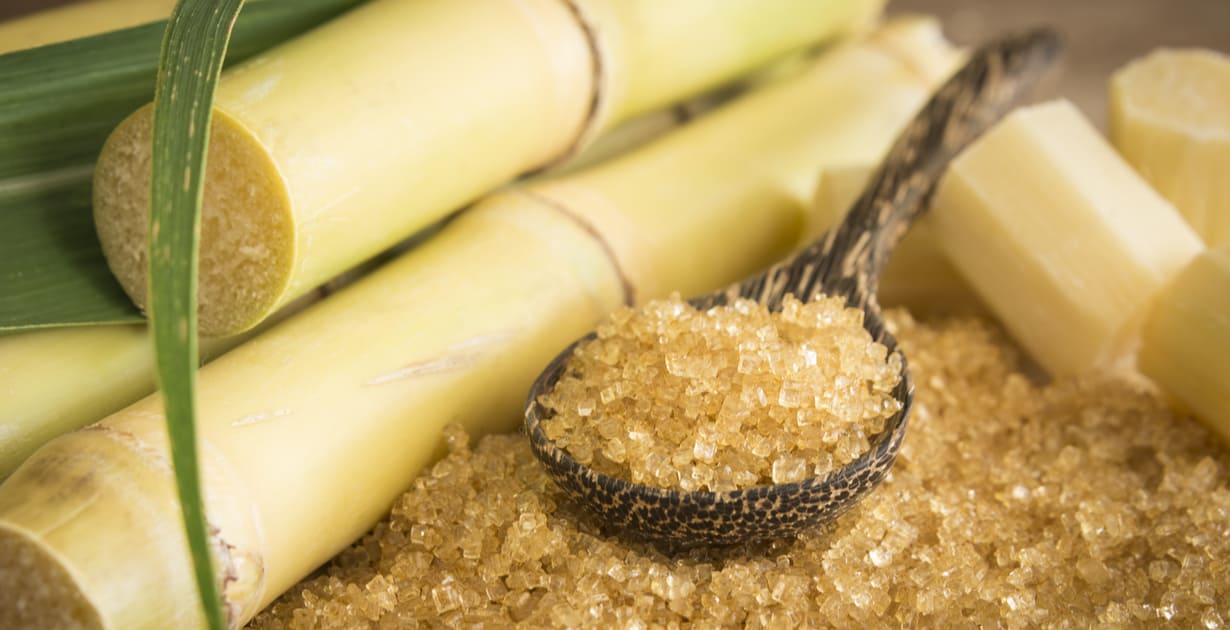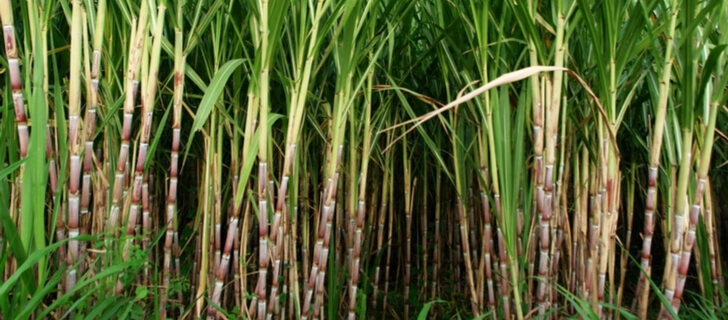What Are Sugar Canes Used For in School Science Projects?
Wiki Article
Understanding Exactly How Sugar Canes Job: What Are Sugar Canes Utilized For in Food and Beyond?
Sugar walking canes are important to numerous elements of both industrial and cooking practices. Their versatility permits them to be transformed right into sugar, beverages, and also biofuels. As one explores the trip from farming to processing, the varied applications of sugar walking sticks disclose a complex interaction in between agriculture and sector. The ramifications of sugar cane production prolong past mere utility, elevating concerns regarding environmental sustainability and financial effect.:max_bytes(150000):strip_icc()/GettyImages-564187083-721fb5bc6c764f929f5134d736828a4f.jpg)
The Background and Beginning of Sugar Canes
Although often taken for approved in modern-day diet regimens, the history and origin of sugar walking canes expose a complex trip that covers hundreds of years. Belonging To Southeast Asia, sugar walking stick was first cultivated around 8000 BCE, with its sweet juice becoming very valued by very early human beings. By the first millennium advertisement, it spread out to India, where it was improved into taken shape sugar, a significant development that changed its usage and profession. The intro of sugar walking cane to the Mediterranean took place around the 7th century, thanks to Arab investors, that identified its financial potential.During the Age of Expedition, European colonists developed sugar ranches in the Caribbean, substantially influencing worldwide trade. By the 17th century, sugar ended up being an essential product, sustaining economic situations and affecting social structures. The story of sugar canes is linked with agriculture, commerce, and social exchanges, noting its significance fit contemporary cooking practices and financial systems.
Farming and Gathering Practices
The growing and harvesting of sugar canes involve numerous crucial practices that identify the top quality and yield of the crop - What Are Sugar Canes Used For. Crucial element include reliable soil prep work strategies, precise planting techniques, and efficient gathering techniques. Recognizing these practices is important for optimizing manufacturing and guaranteeing sustainability in sugar walking cane farmingSoil Prep Work Strategies
Efficient soil preparation strategies are necessary for effective sugar walking cane cultivation, as they lay the structure for healthy development and perfect return. The procedure starts with soil testing to assess nutrient levels and pH equilibrium, enabling customized amendments. Plowing and tilling are after that utilized to freshen the soil and damage up compaction, improving origin penetration. Including raw material, such as garden compost or well-rotted manure, improves soil fertility and structure. Additionally, appropriate drainage systems are critical to prevent waterlogging, which can hinder walking stick growth. Cover cropping might additionally be utilized to subdue weeds and improve soil health. These practices jointly assure that sugar cane has the very best atmosphere to grow, leading to robust plant health and boosted performance.Growing and Growth
Successful growing and growth methods are crucial for maximizing the yield of sugar cane. The procedure starts with selecting healthy seed walking sticks, which are segments of fully grown stalks rich in buds. These seed walking canes are commonly grown in well-prepared dirt, preferably at a deepness of 4 to 6 inches, making certain ample wetness and oygenation. Sugar walking cane prospers in warm environments with adequate sunshine and calls for consistent watering, especially throughout droughts. Fertilizing with potassium, phosphorus, and nitrogen is important to advertise durable development. Weed control is likewise vital, as competitors can prevent advancement. Routine monitoring of plant wellness and dirt conditions allows for prompt treatments, eventually bring about an effective crop that meets market needs.Collecting Approaches
Collecting sugar cane calls for mindful planning and implementation to ensure maximum return and quality. Usually, the harvest occurs when the walking stick reaches perfect sugar material, typically between 12 to 18 months after growing. There are two primary approaches: guidebook and mechanical harvesting. Manual harvesting entails laborers utilizing machetes to reduce the stalks at ground degree, making certain marginal damage to the plant and dirt. In contrast, mechanical harvesting uses specialized equipments that cut, chop, and deliver the cane, raising efficiency and reducing labor prices. Nevertheless, mechanical approaches can result in greater dirt compaction and loss of nutrients. No matter the method, timely harvesting is vital, as delays can result in decreased sugar top quality and boosted sensitivity to pests and illness.Processing Methods for Sugar Extraction
The processing of sugar walking stick is a critical phase in sugar manufacturing, incorporating several crucial strategies - What Are Sugar Canes Used For. Originally, harvested walking stick undergoes juicing and squashing to extract its sweet liquid. This juice then continues with filtration and formation, transforming it into the sugar most generally used todayHarvesting Sugar Cane
Sugar cane harvesting marks a vital stage in the manufacturing procedure, where timing and strategy play crucial roles in making best use of yield. Generally, the harvest happens when sugar material is at its peak, which varies based upon climate and growth conditions. Workers make use of specific equipment or manual tools to reduce the walking cane at the base, making certain marginal damages to the plant. Correct strategy is crucial; reducing expensive can decrease the quality and quantity of the sugar extracted later on. After cutting, the cane must be moved promptly to refining facilities to stop spoilage and sugar degradation. The effectiveness of the harvesting procedure significantly affects the overall productivity and profitability of sugar walking cane farming, making it a crucial emphasis for producers.Juicing and crushing
As soon as sugar cane is harvested, the next vital action involves juicing and crushing to draw out the wonderful fluid which contains sucrose. This procedure generally uses hefty machinery created to crush the stalks, damaging down the fibrous structure and launching the juice. Rollers or mills use significant pressure, allowing the walking stick juice to spurt while dividing the coarse residue, called bagasse. Once smashed, the cane is frequently based on a collection of pressing stages to optimize juice removal. The collected juice is abundant in sugar and might contain pollutants, which will be resolved in later processing steps. On the whole, juicing and crushing are crucial methods that transform harvested sugar cane right into a fluid type suitable for more improvement.Purification and Condensation
Purification and crystallization are critical processes in transforming raw walking stick juice right into polished sugar. After removing juice from smashed sugar canes, the liquid includes pollutants such as plant proteins, minerals, and fibers. To accomplish filtration, the juice goes through clarification, where warmth and lime are included in precipitate contaminations, which are then removed. The made clear juice is after that focused via evaporation to create a thick syrup.Next, formation occurs, where sugar crystals develop as the syrup cools. This procedure commonly entails seeding the syrup with existing sugar crystals to promote consistent development. The resulting crystals are divided from the remaining molasses with centrifugation, yielding pure sugar. This refined product is after that dried and packaged for different cooking uses.Culinary Use Sugar Canes
While usually connected mostly with sweeteners, sugar walking canes supply a functional array of cooking applications beyond their role in sugar manufacturing. Fresh sugar walking cane can be juiced, generating a sweet, invigorating drink enjoyed in lots of exotic regions. This juice serves as a base for alcoholic drinks and shakes, adding an unique taste profile.Additionally, sugar walking stick syrup, originated from steaming down the juice, is utilized as a natural sweetener in numerous meals, from marinades to treats. The syrup gives a rich, caramel-like taste, improving both savory and wonderful recipes.In some foods, sugar cane stalks are grilled or roasted, supplying a distinct great smoky preference that matches meats and vegetables. Sugar walking cane can be included right into treats, such as sweets and desserts, where its sweetness and fibrous structure produce fascinating contrasts. In general, sugar walking canes add to both innovative and conventional cooking productions throughout varied cultures.Industrial Applications Beyond Food
Past their culinary uses, sugar walking sticks play a considerable role in numerous industrial applications, contributing to industries such as bioenergy, paper manufacturing, and bioplastics. The coarse material of sugar walking cane is utilized in the production of biofuels, particularly ethanol, which acts as a renewable resource source that minimizes dependancy on nonrenewable fuel sources. In the paper sector, bagasse, the coarse residue left after juice extraction, is processed into pulp for paper and cardboard production, advertising lasting methods by using waste. Furthermore, improvements in bioplastic innovation have actually led to the development Get the facts of biodegradable plastics originated visit from sugar walking cane, using a green option to conventional petroleum-based plastics. These industrial applications not only enhance the value of sugar walking canes yet likewise align with international activities towards sustainability and eco-friendly resources, showing their flexibility past the kitchen area.

The Ecological Influence of Sugar Walking Stick Production
The manufacturing of sugar cane, despite its countless commercial benefits, postures significant ecological difficulties. Deforestation is often a repercussion, as large locations of land are removed to grow sugar walking stick, leading to habitat loss and biodiversity decrease. Furthermore, the extensive farming methods related to sugar walking cane cultivation can result in soil deterioration and disintegration. The heavy usage of plant foods and chemicals to optimize returns adds to water contamination, adversely influencing aquatic ecosystems.Moreover, sugar walking cane production is linked to raised greenhouse gas exhausts, particularly with land-use adjustments and the burning of walking stick areas prior to harvest. These techniques not only affect air quality however likewise add noticeably to environment change. On top of that, the water-intensive nature of sugar cane farming locations tension on regional water sources, impacting communities and neighborhoods reliant on these products. Dealing with these environmental influences is essential for sustainable sugar walking cane production in the future.Often Asked Inquiries
Are There Health And Wellness Benefits Related To Consuming Sugar Walking Stick?
The inquiry of health advantages connected to sugar walking cane intake highlights potential benefits. Sugar walking stick may supply hydration, crucial minerals, and anti-oxidants, yet small amounts is crucial as a result of its all-natural sugar web content and possible health effects.How Does Sugar Walking Cane Contrast to Various Other Sugar Nutritionally?

Sugar walking stick provides natural sweet taste, mostly making up sucrose, while other sugar differ in structure and caloric web content. Compared to man-made alternatives, sugar walking stick provides have a peek at this website minerals and vitamins, though it continues to be high in calories and carbs.
Can Sugar Cane Be Expanded in Non-Tropical Regions?
Sugar walking cane mostly thrives in exotic climates, calling for warm temperature levels and plentiful rainfall. While some non-tropical areas try farming, success is limited due to inadequate heat and expanding periods, making large-scale production testing.What Are the Common Insects or Illness Influencing Sugar Canes?
Usual pests affecting sugar walking canes include the sugarcane borer and aphids, while illness like fallen leave scald and red rot position substantial hazards. Efficient monitoring methods are necessary for keeping healthy sugar walking stick plants and maximizing yields.How Does Sugar Walking Stick Effect Local Economies?
The effect of sugar walking cane on local economic climates is substantial, offering job opportunity, improving agricultural industries, and contributing to exports. Its cultivation boosts and sustains neighborhood businesses community growth via enhanced earnings and facilities enhancements. Indigenous to Southeast Asia, sugar walking cane was initial grown around 8000 BCE, with its pleasant juice coming to be very valued by early worlds. The intro of sugar walking cane to the Mediterranean took place around the 7th century, thanks to Arab investors, who recognized its financial potential.During the Age of Expedition, European homesteaders developed sugar ranches in the Caribbean, significantly affecting global trade. The handling of sugar walking cane is a crucial phase in sugar production, encompassing numerous crucial techniques. While frequently linked mostly with sweeteners, sugar walking canes supply a flexible range of cooking applications beyond their duty in sugar manufacturing. The heavy usage of plant foods and pesticides to optimize returns contributes to water air pollution, adversely affecting water ecosystems.Moreover, sugar cane manufacturing is linked to raised greenhouse gas exhausts, specifically via land-use changes and the burning of walking cane fields prior to harvest.Report this wiki page